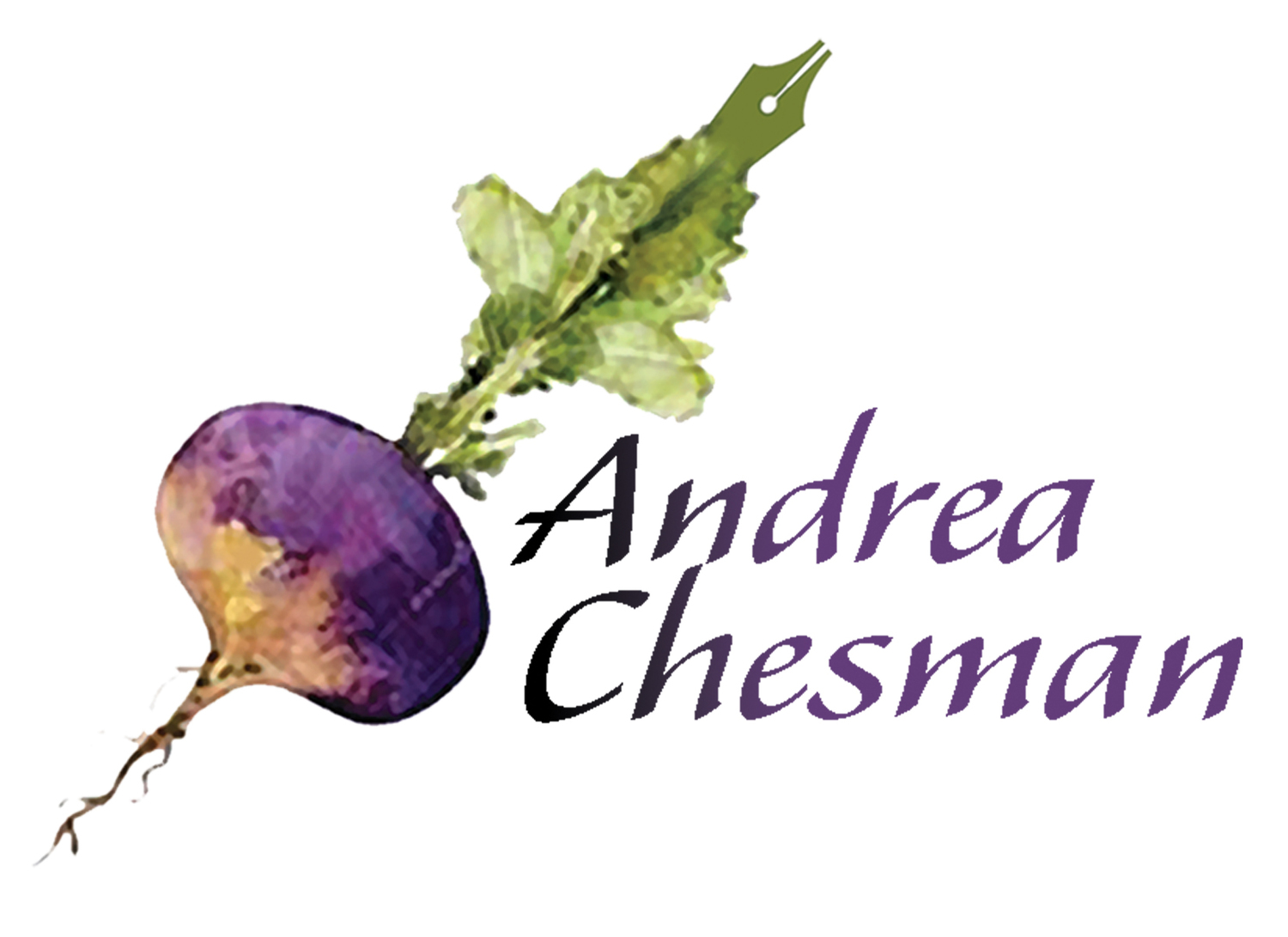Playing Ketchup
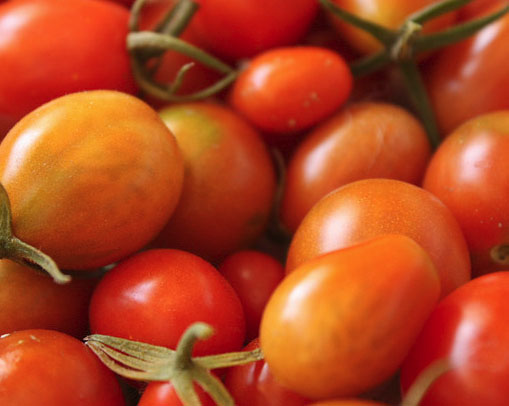 We grew about six different varieties of cherry tomatoes, including some black, some currant, some grape, some yellow.
We grew about six different varieties of cherry tomatoes, including some black, some currant, some grape, some yellow.
I’m always playing catch-up with my garden and my life. So one of my best tricks for keeping up with my tomato harvest is to freeze the tomatoes as they ripen and make sauces and salsas when I am ready. Why mention it now?
Because I just turned a 10 pound bag of cherry tomatoes into sauce. So I figure while you are contemplating how many tomato seeds to order, I will tell you how to tame sugary sweet, amazingly prolific cherry tomatoes into sauce.
 The finished sauce.
The finished sauce.
There are, of course, plenty of things to do with cherry tomatoes as they ripen. And because they tend to ripen earlier than beefsteaks or Romas, I do find myself giving over a large portion of my tomato “orchard” to cherries. Cherry tomatoes are dependable, even when the weather is not.
At some point, a daily harvest of cherry tomatoes yields more than one household could ever eat fresh. Not a problem. I buy jumbo-size plastic bags and the cherry tomatoes go directly into the bag, unwashed, unstemmed, and the bag goes into the freezer. If the bag isn’t completely filled, I can add more as the tomatoes ripen.
At some point (like now), I’m ready to can them. The tomatoes go from bag to colander for a rinse, and then from colander to pot to cook them enough to break them down. Then I run the tomatoes through a food mill, which takes care of the skins and stems and most of the seeds. The resulting puree is much less than expected, since cherries are mostly seed and skin, but at least they were harvested and put to use, rather than popping up as volunteers next season (though there will be plenty of those).
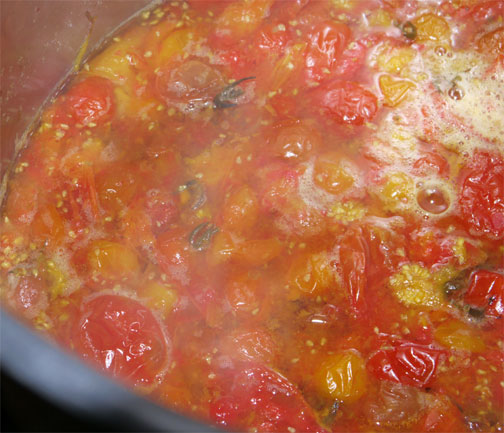 First I cook the tomatoes to break them down.
First I cook the tomatoes to break them down.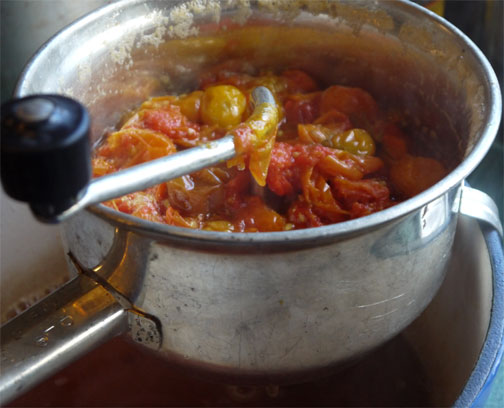 Then I run the sauce through a food mill.
Then I run the sauce through a food mill.
I cook the puree down to a consistency good for sauce. If I’m in the mood to pressure can, and no reason not to, I’ll add lots of sautéed onions, garlic, bell peppers, and herbs-- either frozen pesto or dried or frozen basil leaves, plus dried oregano, thyme, and rosemary. Salt and pepper, of course. If the sauce is still too sweet, some balsamic vinegar tones down the sweetness nicely, as does a little soy sauce. Of course, with no added vegetables, it would be fine to can the tomatoes in a boiling water bath. But the reason to master using a pressure canner is to be able to have foods that are ready to be heated and served.
 The sauce is cooked down until it has a nice consistency.
The sauce is cooked down until it has a nice consistency.
The sauce is still sweet but it pairs particularly well with sausage, I think. Its just fine on pasta, on pizza, on toasted bread with cheese. Maybe it is a little sweet for all applications, but it is just fine for an occasional meal.
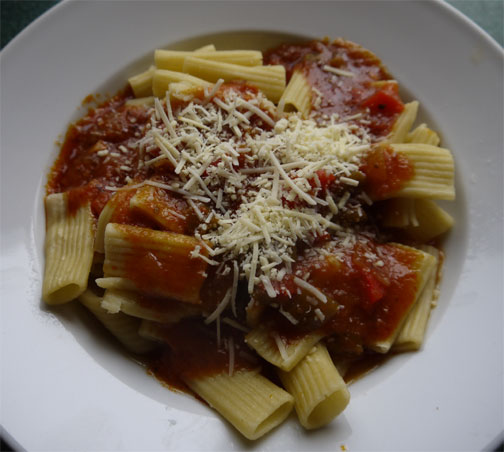 Dinner is served!
Dinner is served!
The cherry tomatoes could have gone into ketchup, with the natural sugars in the cherry tomatoes replacing some of the added sweetener in the recipe.
With frozen cherry tomatoes and long, cold winter nights, there’s no reason not to get some canning done when the extra heat in the kitchen is more than welcome.
